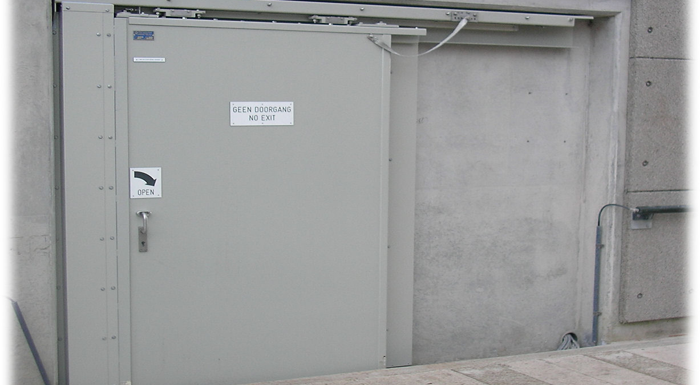
The presence of doors with a fire and blast rating in structures and buildings in the Oil & Gas industry, offshore wind industry and Infra & Defense industry is a fundamental part of the overall architectural outfitting. Industry standards put strict rules and regulations on such doors in order to provide safety and protection for human lives and equipment. However fire and blast resistance are not the only essential characteristics for a door. Each project requires unique specifications for doors next to fire and blast resistance.
This blog will outline these additional characteristics and their importance for overall safety and optimal working conditions.
Gastight characteristics
A first additional characteristic of a door is its gastight properties which means that the door has to has a solid, close-fitting design to resist the passage of gas under normal operating conditions. In e.g. the petrochemical industry a lot of chemical gasses and vapours are handled on a daily basis. Generally, such gasses are carefully sealed and put away in tanks so it doesn’t mix with the air. But if, for whatever reason, any dangerous gas does mix with air, huge health risk are inevitable.
In order to minimize the risk for such incidents, seals can be applied to doors to prevent dangerous gasses from passing from one compartment to another.
Weathertight characteristics
A weathertight door is generally located on the external side of a structure, where they can be subject to the adverse weather conditions offshore. Weathertight doors designed to prevent the ingress of water by harsh weather conditions such as wind and/or rain.
Weathertightness is realized by sealing the door with a special weathertight seal in order to keep all (extreme) weather conditions outside of the structure.
Noise proof characteristics
The aim of noise proofing is to limit noise levels and attain satisfactory sound insulation and acoustic conditions throughout the areas of e.g. accommodation, utility, drilling and production.
According to NORSOK, a good acoustic environment:
- reduces the risk of permanent hearing damage to an acceptable level and prevent accident risks and other health hazards;
- ensures that warning signals and emergency messages are clearly audible;
- allows adequate speech, telephone and radio communication, and audible oral perception;
- makes a reasonable level of conversational privacy possible;
- maintains working efficiency and proficiency of personnel performing designated tasks;
- provides an acceptable sleeping and recreational environment in accommodation area (LQs).
The doors between rooms should be designed in order to achieve an adequate sound insulation in order to provide:
The right level of insulation for sound proof doors can be achieved by layers of e.g. mineral wool.
Thermal insulation characteristics
Thermal insulation is applied to maintain a constant and comfortable temperature within a structure, such as an oil platform or petrochemical plant and has 4 benefits:
- Regulates temperature;
- Saves energy;
- Reduces costs;
- And is environmentally friendly.
Thermal insulation for doors can be achieved by applying an insulation material in order to achieve optimum thermal resistance to enjoy all the advantages of thermal insulation for your project. During the design stage you should pay close attention to ensure longevity and performance over the lifetime of the insulation material.
Want to know more about fire and blast rated doors? Download our eBook!







